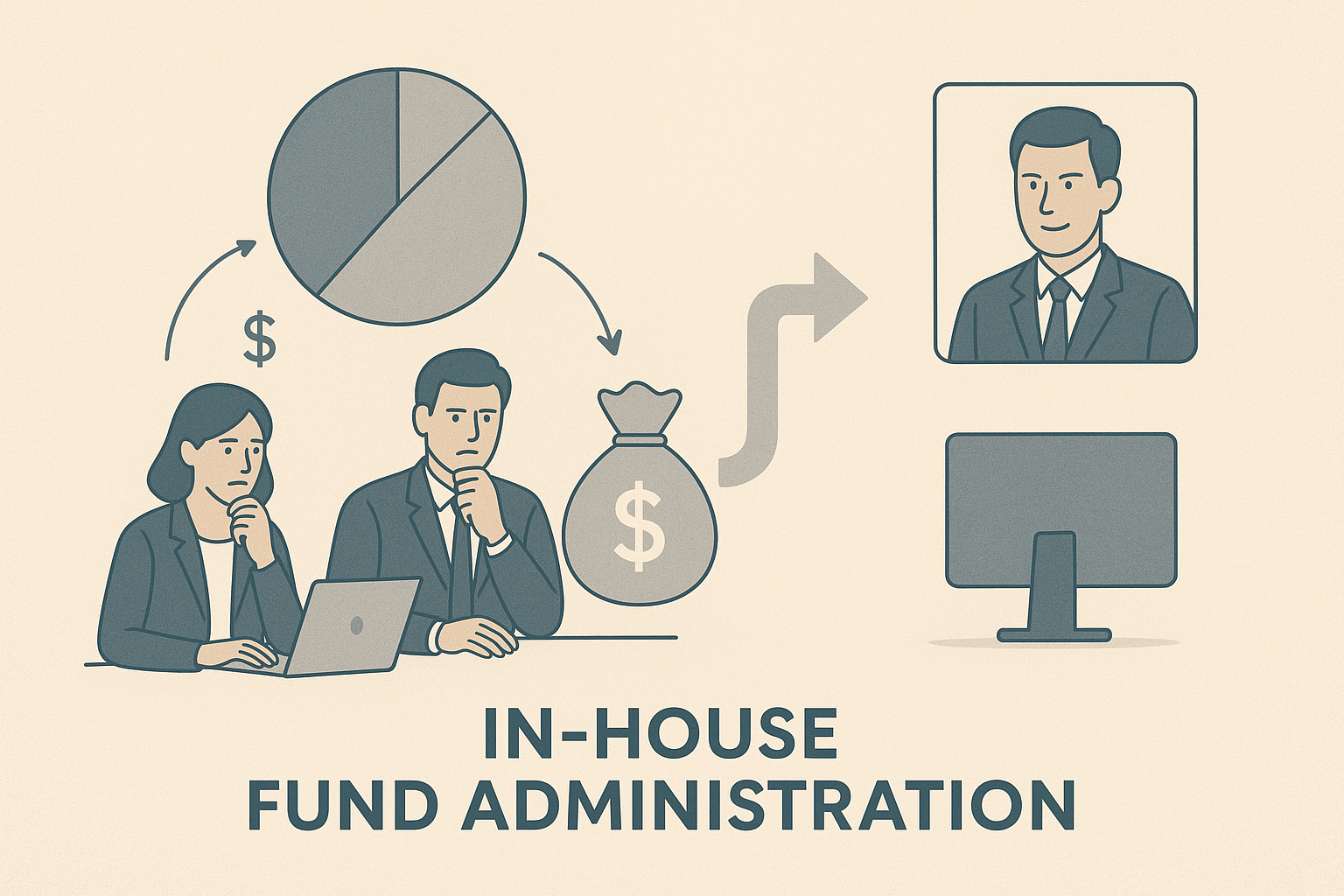Blog
There are Still Plenty of Self-Administering Private Funds – and It’s Not Just the Start-Ups

10/14/2025
Institutional investors tend to prefer allocating to private funds that hire external fund administrators. A third-party provider adds independence, reduces conflicts of interest, and provides an extra layer of oversight and assurance. Yet despite the fact that it would seem obvious to fund managers to tick this particular client preference box, some funds still choose to self-administer.
It’s not as crazy as it sounds. For smaller or more specialized managers, outsourcing may feel disproportionate to their size and cost base. Others may value the control, flexibility, and confidentiality of in-house administration, especially when they think that they have the right expertise in-house.
So, this month, we took a look at the 9AT database to see just how prevalent self-administered funds are. To be clear, we looked only at advisers that listed no fund admins at all on any of their funds – some advisers had funds where they did list the admin, and some where they didn’t – because we were more curious about the corner of the market that seems to eschew the independent fund administrator entirely.
The extent of the prevalence depends largely on your point of view.
There were, at the end of September, 3,229 private fund advisers that listed no fund administrator on any of their collective 20,020 funds. That compares to 14,498 private fund advisers and an aggregate 125,911 funds in the total private funds’ universe. Again, to emphasize, we are looking only at advisers which have no externally administered funds – there are some advisers that have both internally and externally administered vehicles. But using our methodology, we can say that 22.3% of all advisers do not have an external administrator, and at least 15.9% of all funds are internally administered (and plenty more when including funds from managers that have admins listed on some funds).
That’s higher than we thought it might be. But what is less surprising, perhaps, is how this all shakes out at the category level. There are 10 times more private equity funds than hedge funds that self-administer, and approximately 8.5 times more self-administered venture capital funds than hedge funds (Table 1 below).
Table 1: Funds of Firms With no Listed Administrator, by Type
| Fund Category | Quantity |
| Private Equity | 8,434 |
| Venture Capital | 6,832 |
| Real Estate Fund | 2,272 |
| Other | 1,615 |
| Hedge Fund | 810 |
| Securitized Asset Fund | 51 |
That data doesn’t tell the whole story, of course, because there are approximately twice as many private equity funds as hedge funds and 1.5 times as many venture capital funds as hedge funds, so the raw numbers for those categories. But the general trend of greater use of hedge funds being more common users of external fund administrators is likely a surprise to no-one due to higher trading volumes, more complex investment strategies, the need for more frequent valuations due to daily or monthly price changes, and the more frequent investor subscriptions and redemptions. Accurate and independent NAV calculations are clearly more critical here.
By contrast, private equity and venture capital funds are generally closed-end vehicles with long investment horizons. Capital is usually committed up front and called down over time, valuations are performed quarterly, semi-annually or even annually, and they rely more heavily on manager judgment since portfolio companies are illiquid and not publicly traded. In this environment, investors are more accepting of internal administration, provided the manager has robust processes in place.
What is also interesting is what the self-admin market looks like. Approximately one third are under $10mn in Total Private Fund GAV and more than two-thirds - 70% manage less than 5 funds.
But there are some big guns that have shown – are showing? – that becoming an alternative investment behemoth is entirely possible without the support that an external administrator provides.
The top three self- administering firms by Total Private Fund gross asset value are shown in Table 2 below and they are all ‘household’ names in the private markets industry.
Table 2: Top Three Self-Administering Private Fund Advisors
| Fund Category | Category | Quantity |
| Hines Capital Advisors | Real Estate | $465B |
| Warburg Pincus | Private Equity | $148B |
| Andreesen Horowitz | Private Equity and Venture Capital | $83B |
What will be interesting is to see if any of the firms that currently self-administer end up changing their mind by this time next year (and which administrators they hire if they do). And it will also be interesting to see whether or not these numbers will be higher or lower in aggregate; if you read the news media, you’ll be told that the general trend would seem to be towards outsourcing to an external fund administrator but we’re wondering if the ever-increasing costs of launching a private fund sponsor might mitigate or even negate that trend.
Editor's Picks:
Here are a handful of articles that we’ve seen recently that we found interesting. Hopefully, you do, too!
 Previous
Previous